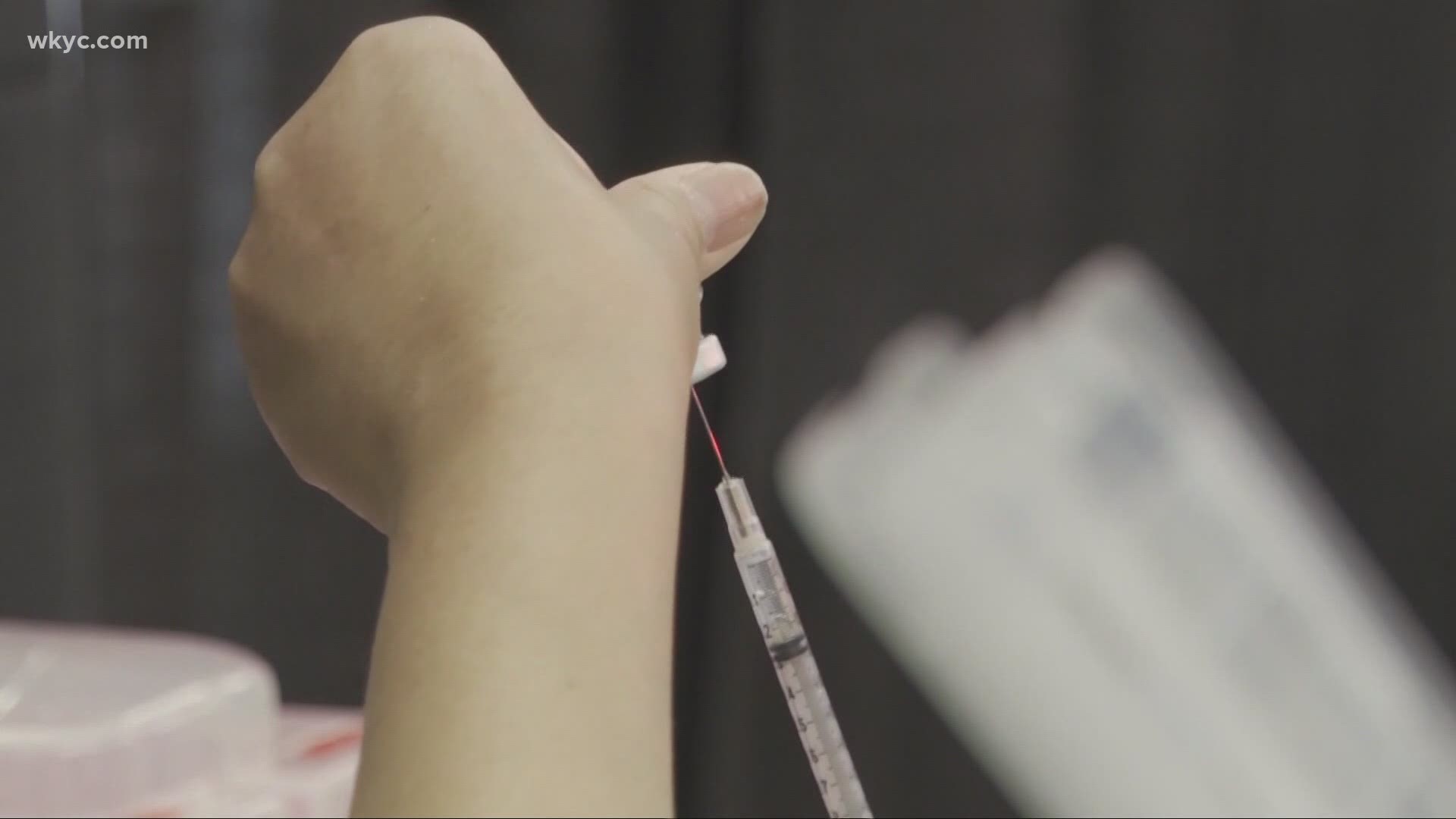CLEVELAND — It was nearly two months ago when Gov. Mike DeWine gave the public a metric for when he’d be reopening Ohio in full.
The goal was reaching no higher than 50 new COVID-19 cases per 100,000 people over a two-week period. However, when asked about other states instead using vaccination rate as a metric for reopening, the governor said his administration is looking into it.
"We're looking at any kind of measures that would tell people where we are going and what we have to achieve" DeWine said Wednesday.
So is one better than the other or easier to obtain? Is there an even better piece of data to let us know where we stand as a state?
"At the end of the day, I think the most important thing is that COVID isn’t causing people to be so sick that they're going to the hospital and dying," Dr. David Margolius, an infectious disease specialist at MetroHealth, told 3News.
Margolius says the best barometer for the state's status is hospitalizations and deaths, but the problem with using those numbers is they tend to lag behind.
"It will take longer for those to start to drop after we know we're doing the right thing," he explained.
As far as a change from cases to vaccinations, he believes the case rate is a more accurate representation of the state. However, since the two are so intertwined, the goal post wouldn't be moving much.
"Cases per 100,000... I think it’s a really good metric," Margolius said, "but we could use the vaccination rate, too. I think it will time out at the same time."
Then why would they switch the metric at all? Margolius says not only does the vaccination number give people an actionable number to shoot for; it's also just easier to understand.
"Cases per 100,000, we're looking at run charts and line graphs," he said. "It's kind of complicated to think through. It's like, 'What can I do to get to that number?' If we go to the total number of first dose vaccines, then we can draw one of those cool, fundraiser thermometers and start checking a couple hundred thousand each week. It’ll feel more tangible, the progress."
If we do move to a vaccination goal instead of cases per capita, the question becomes: What is that number? The neighboring state of Kentucky is currently working towards a vaccination goal of about 70% of their adult population, and Dr. Margolius suggested 55% of Ohio’s total population. Either way, we're at nearly 4.5 million people with at least a first dose of the vaccine, and we’d need to get to around 6-6.5 million to hit those numbers.

